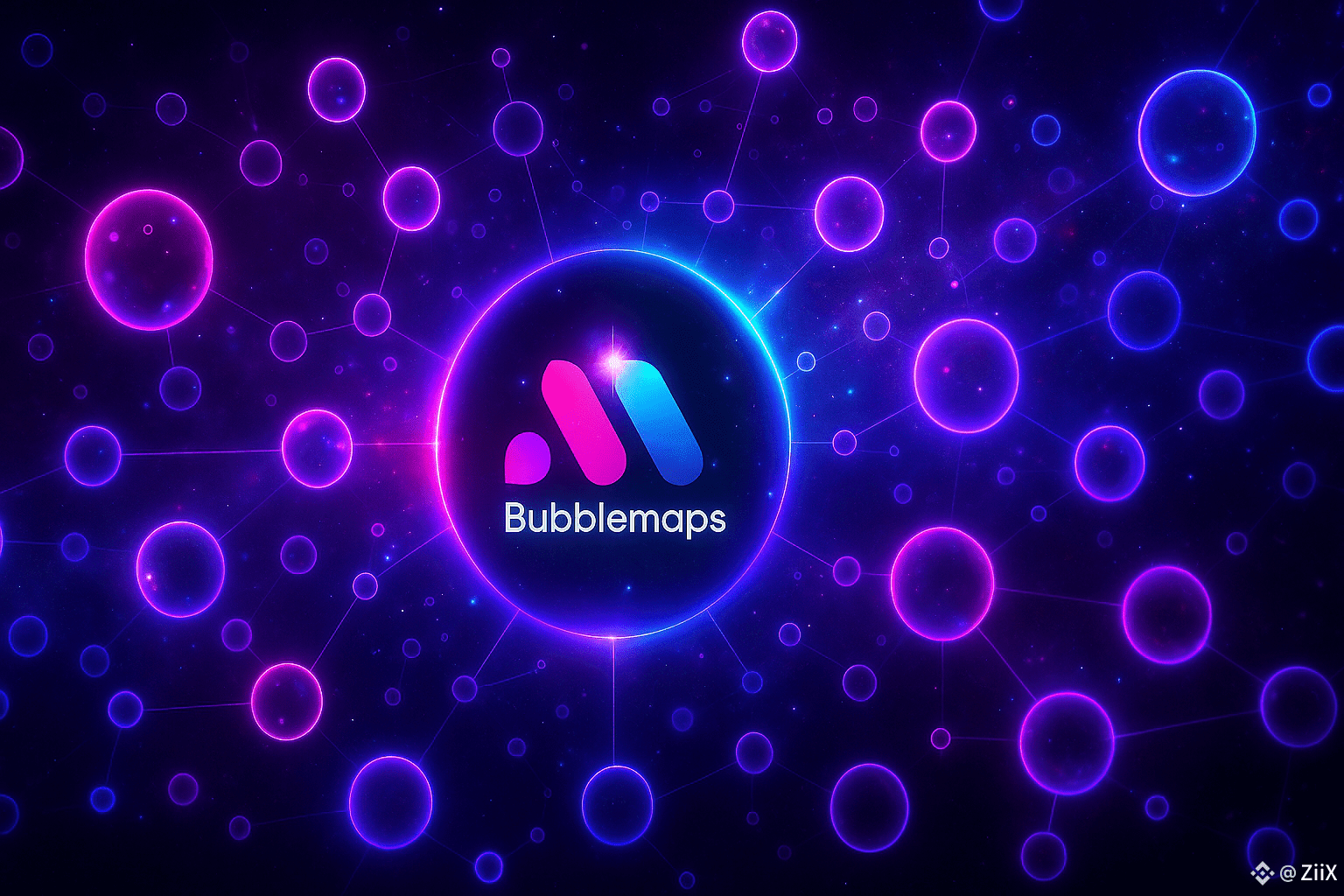When it comes to blockchain, one truth stands tall: the data is all there, but few people truly see it. Public ledgers record everything — every token transfer, every wallet movement, every hidden cluster waiting to be revealed. Yet for most investors, this mountain of raw information remains as impenetrable as code in a foreign language. Numbers, spreadsheets, CSV exports — they hold the truth, but our brains rebel.

Enter Bubblemaps, a platform that doesn’t just present blockchain data, but transforms it into something our minds naturally want to understand. The secret? Bubbles.
It sounds almost too simple. Why would spheres floating across a screen outperform the precision of neatly aligned spreadsheets? The answer lies in psychology, perception, and the way humans have evolved to process the world.
The Cognitive Problem with Rows and Columns
Spreadsheets, the weapon of choice for analysts, traders, and auditors, are designed for accuracy — not intuition. Each row hides meaning inside cells, demanding mental effort to cross-reference, sum, and interpret. Staring at an Excel sheet is like staring at a wall of hieroglyphs: the information is there, but it’s locked behind a decoding process.
For blockchain, this creates a bottleneck. Imagine trying to detect insider trading by scanning 50,000 wallet addresses in text form. You might spot a suspicious transaction if you already know where to look, but patterns — the smoking gun of manipulation — rarely live in isolated cells. They live in relationships.
And that’s where spreadsheets fail. Humans aren’t naturally wired to see relationships in raw numbers. We evolved to detect patterns in visual space — predators in the grass, fruits in a tree, faces in a crowd.
Why Our Brains Love Bubbles
Circles, it turns out, are one of the most natural shapes for human perception. From the sun and moon to the iris of an eye, circles dominate our visual world. They signal wholeness, symmetry, and completeness. When placed on a map, bubbles draw the eye instantly.
@Bubblemaps.io leverages this psychology brilliantly. Each wallet or token allocation becomes a bubble, its size representing supply, its connections drawn as visible threads. Suddenly, instead of reading "Wallet A holds 15% of supply," you see a bubble dwarfing the rest, demanding attention.
The experience is visceral. Large bubbles feel powerful, threatening even, while clusters of interconnected circles look like tribes or families. The brain doesn’t need to "calculate." It knows.
The Power of Clusters
One of Bubblemaps’ biggest innovations is the visual clustering of wallets. Instead of assuming every address is independent, Bubblemaps shows when wallets are behaving in sync — moving together, connected like planets orbiting a shared sun.
Why does this matter? Because deception in crypto often hides in fragmentation. A whale who wants to appear small splits holdings across dozens of wallets. On a spreadsheet, those wallets look harmlessly average. But on a bubblemap? They light up as a constellation, exposing their common origin.
It’s a moment of revelation. Instead of working like an accountant, tallying rows, you work like a detective, spotting social patterns. The map becomes alive with stories:
A neat, equal cluster might suggest a coordinated insider team.
A massive, lonely bubble could mean a centralization risk.
A sudden new orbit of wallets might signal an upcoming dump.
This shift — from numbers to narratives — is what gives Bubblemaps its edge.
Visual Thinking: From Cavemen to Crypto Traders
Psychologists have long known that humans are visual creatures first, logical reasoners second. Cave paintings predate written language by tens of thousands of years. Our ancestors survived not by parsing spreadsheets, but by reading the environment: tracks in the dirt, patterns of stars, ripples in water.
This primal wiring hasn’t changed. In fact, studies in cognitive science show that people recall visual information far better than textual or numerical data. A concept remembered as an image is "sticky," while numbers quickly dissolve from working memory.
In other words: if you want investors to remember that 60% of a token supply sits in five wallets, you can tell them with a sentence, or you can show them with five bubbles dominating a map. Guess which one sticks.
The Emotional Dimension of Bubbles
Numbers are neutral, cold. They whisper facts but rarely stir feelings. Visuals, on the other hand, provoke emotion. And in crypto — a market where greed and fear are constant drivers — emotion matters.
A giant bubble looming over smaller ones creates instant unease. A neat, fair distribution sparks confidence. A tangled mess of interlinked wallets raises suspicion. These feelings guide decisions faster than rational calculations ever could.
#Bubblemaps doesn’t just inform; it persuades. By making risk look risky and fairness look fair, it aligns investor intuition with blockchain reality.
Beyond Trading: The Broader Potential
While most users flock to Bubblemaps for token analysis and insider spotting, the psychology of bubbles has implications far beyond crypto trading. Imagine regulatory bodies using bubble maps to detect fraud at a glance, or community managers proving transparency to their supporters in a way spreadsheets never could.

Even outside blockchain, the principle holds. Any field where networks matter — supply chains, social graphs, even epidemiology — could benefit from bubble-style visualizations. Our brains don’t just prefer them; they thrive on them.
From Complexity to Clarity
The beauty of Bubblemaps lies not in its technology — though it is sophisticated — but in its humility. It respects the limits of human cognition. It doesn’t ask us to become machines parsing infinite data. Instead, it translates blockchain into our native visual language.
It’s the difference between reading a 300-page legal contract and looking at a simple infographic. Both may contain the same truth, but only one feels usable.
The Future of Seeing Crypto
As crypto matures, tools like Bubblemaps will become not just convenient but necessary. Transparency is meaningless if only PhD-level analysts can access it. A decentralized economy must empower everyone, from seasoned traders to casual community members, to see the truth.
Bubblemaps is already pushing this frontier by integrating with exchanges, data providers, and public dashboards. Over time, it may become as standard as candlestick charts are today — a visual grammar for understanding blockchain itself.
Conclusion: The Human Advantage
We often think of technology as cold and inhuman, but the best innovations are the ones that embrace our biology. Bubblemaps succeeds not because it crunches data better, but because it communicates data in a way humans want to consume it.
Spreadsheets will always have their place — precise, rigid, exhaustive. But when the goal is understanding, storytelling, and decision-making, bubbles win every time.
After all, the world itself is full of bubbles: planets, cells, economies, even ideas. Perhaps it’s only fitting that in the chaotic galaxy of crypto, bubbles guide us home.$BMT

